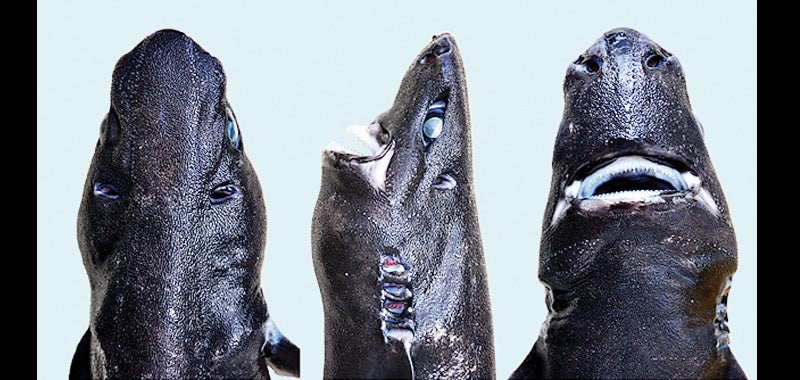
It’s scientific name is Etmopterus benchleyi, but when a shark is all-black, lurks in the depths of the ocean, and has the ability to glow, why limit yourself to the official nomenclature? Researchers have nicknamed this bad boy the “ninja lanternshark.”
These sharks were hauled up from the deep all the way back in 2010, by the Smithsonian Tropical Research Institute. Puzzled with the animal, which seemed slightly different from all known species, researchers went to the Pacific Shark Research Center and the California Academy of Sciences. After years of examination, comparing the specimens to known species of shark, the latter two institutions published a description of the animal today in theJournal of the Ocean Science Foundation. Official verdict: it’s a new kind of shark.
Lanternsharks are relatively numerous. There are now 37 known species. They manage to keep a low profile because of their small size and affinity for deep water. They do have one flashy characteristic: bioluminescent patches on their sides, along the spines by their fins, and in other parts of their bodies, depending on the species. Exactly why they have these patches is unknown. The patches could help them mate, attract prey, eliminate the small shark’s “shadow” to keep it safe from predators, or they could make it easier to coordinate big groups of sharks.
Whatever the reason, the ninja lanternshark is less inclined than others to show off. One of the characteristics that helped scientists identify it as a new species is a “lack of flank markings.” It glows less than other lanternsharks, which is how it earned its nickname. (For those of you wondering, its scientific name is a nod to Peter Benchley, author of Jaws.) Any of you concerned about sharing the waters of the Pacific with a shark can relax. The larger specimens, the females, were only about a foot and a half long.

0 ความคิดเห็น:
แสดงความคิดเห็น